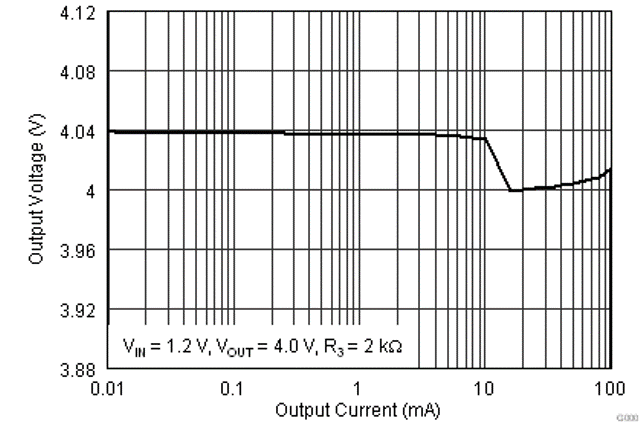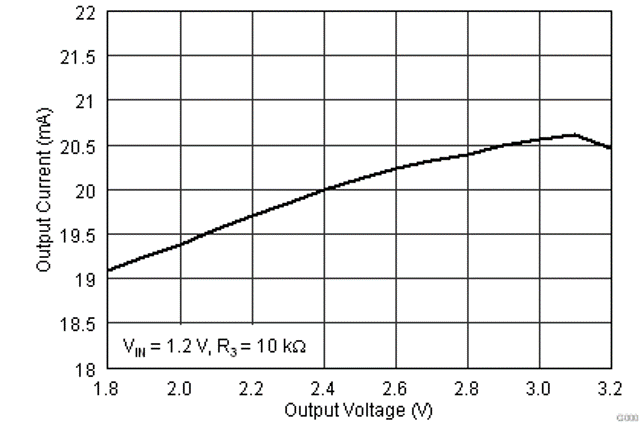SLVSA99C May 2011 – April 2018 TPS61260 , TPS61261
PRODUCTION DATA.
- 1 Features
- 2 Applications
- 3 Description
- 4 Revision History
- 5 Pin Configuration and Functions
- 6 Specifications
- 7 Parameter Measurement Information
- 8 Detailed Description
- 9 Application and Implementation
- 10Power Supply Recommendations
- 11Layout
- 12Device and Documentation Support
- 13Mechanical, Packaging, and Orderable Information
Package Options
Mechanical Data (Package|Pins)
- DRV|6
Thermal pad, mechanical data (Package|Pins)
- DRV|6
Orderable Information
6.6 Typical Characteristics
Table of Graphs
| DESCRIPTION | FIGURE | |
|---|---|---|
| Maximum output current | vs Input voltage (TPS61260, VOUT = {1.8 V; 2.5 V; 4.0 V}) | Figure 1 |
| vs Input voltage (TPS61261, VOUT = 3.3 V) | Figure 2 | |
| Efficiency | vs Output current (TPS61260, VOUT = {1.8 V; 2.5 V; 4.0 V}) | Figure 3 |
| vs Output current (TPS61261, VOUT = 3.3 V) | Figure 4 | |
| vs Input voltage (TPS61260, VOUT = 1.8 V, IOUT = {10; 20; 50 mA}) | Figure 5 | |
| vs Input voltage (TPS61260, VOUT = 2.5 V, IOUT = {10; 20; 50 mA}) | Figure 6 | |
| vs Input voltage (TPS61260, VOUT = 4.0 V, IOUT = {10; 20; 50; 100 mA}) | Figure 7 | |
| vs Input voltage (TPS61261, VOUT = 3.3V, IOUT = {10; 20; 50 mA}) | Figure 8 | |
| Output current | vs Resistance at RI | Figure 9 |
| Output voltage | vs Output current (TPS61260, VOUT = 1.8 V) | Figure 10 |
| vs Output current (TPS61260, VOUT = 2.5 V) | Figure 11 | |
| vs Output current (TPS61260, VOUT = 4.0 V) | Figure 12 | |
| vs Output current (TPS61261, VOUT = 3.3 V) | Figure 13 | |
| Output current | vs Output voltage | Figure 14 |
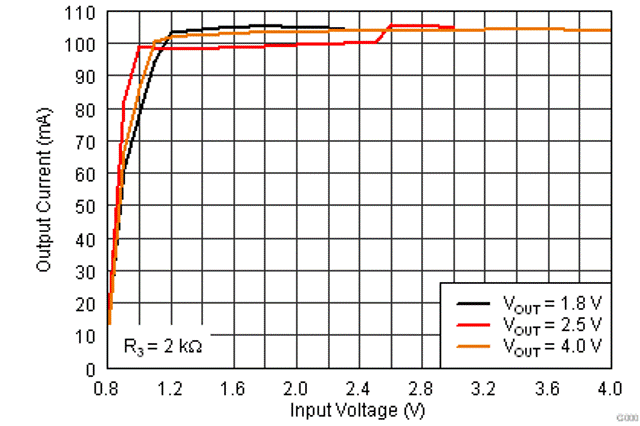
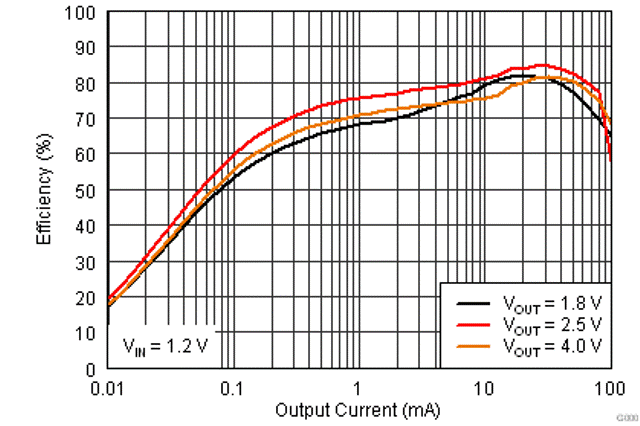
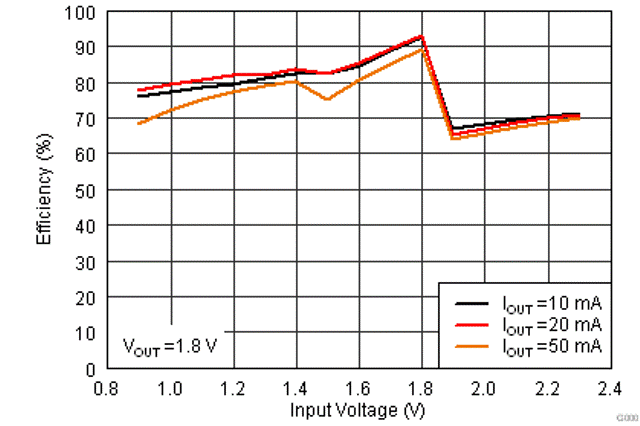
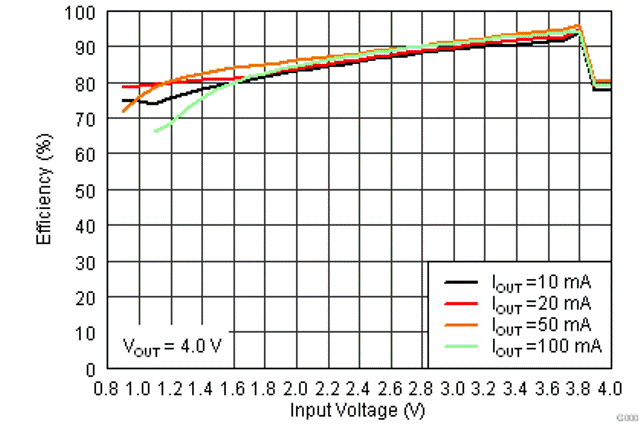
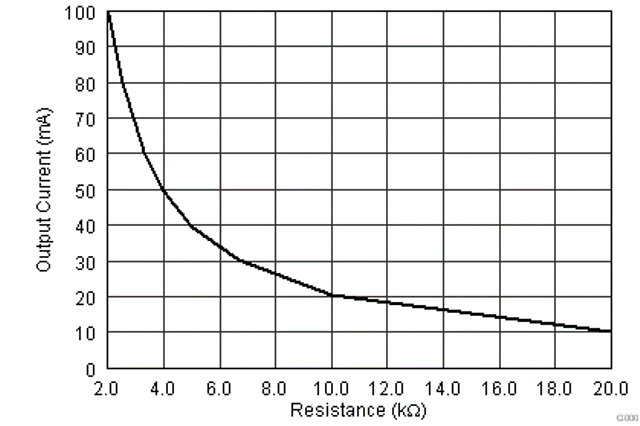 Figure 9. Output Current vs Resistance at RI
Figure 9. Output Current vs Resistance at RI
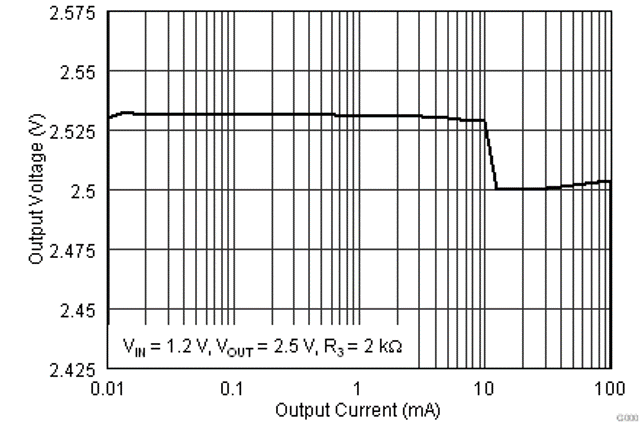
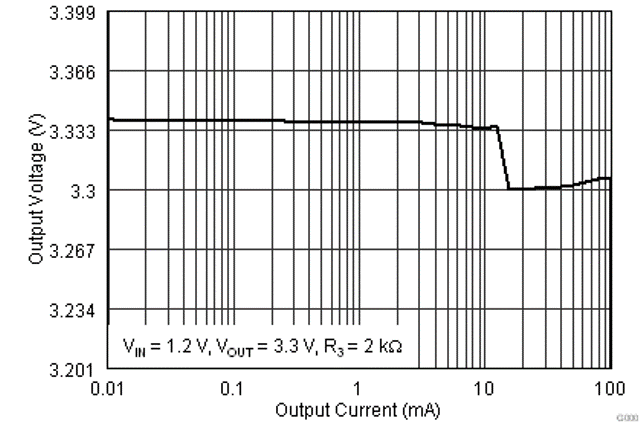
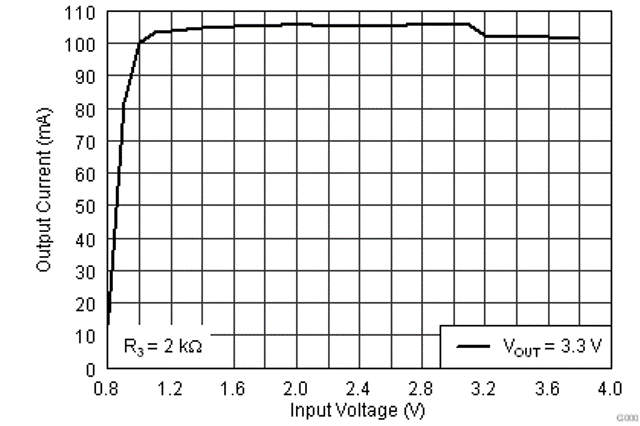
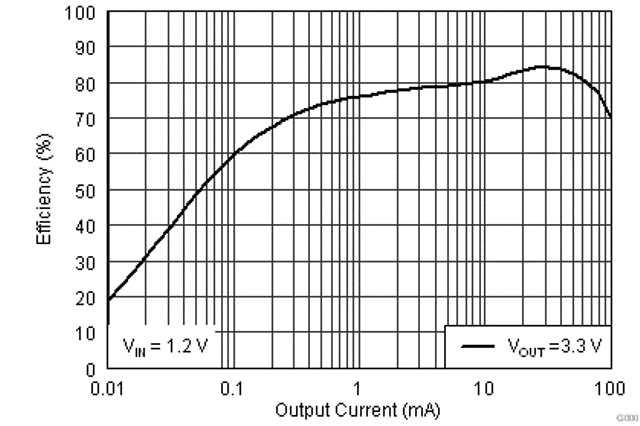
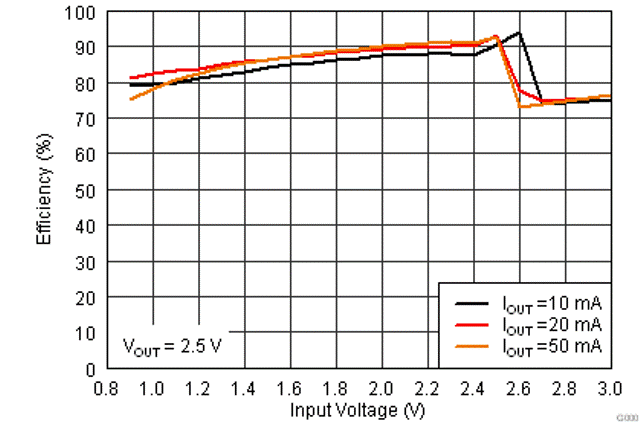
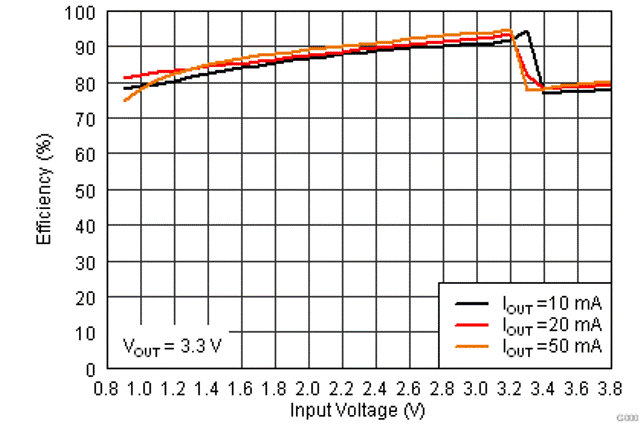
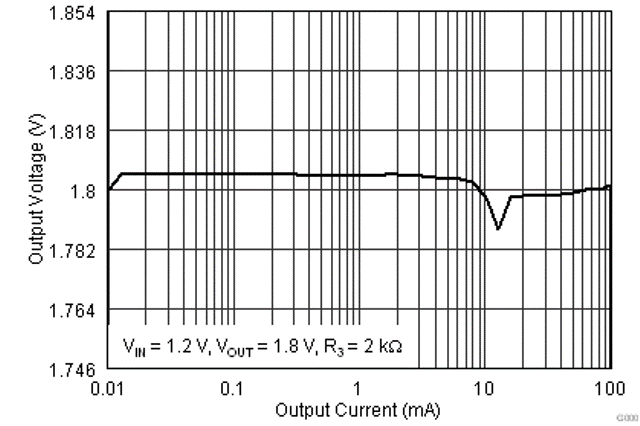 Figure 10. Output Voltage vs Output Current
Figure 10. Output Voltage vs Output Current
